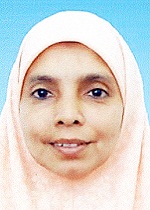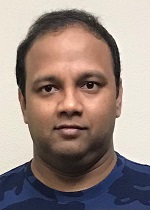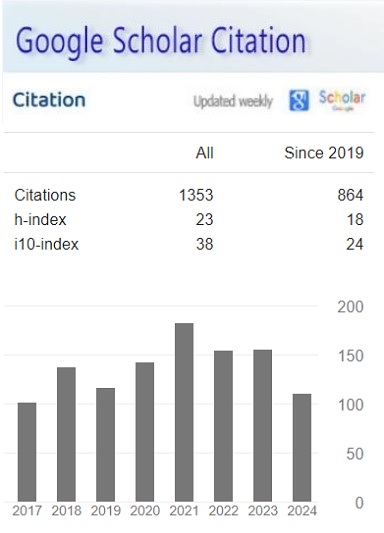Tuning Microstructure and Phase Composition in Porous Ceramic Materials: Implications for Gas Separation Performance
Keywords:
Abstract
This study looks into how gas separation performance is affected by adjusting porous ceramic materials' microstructure and phase composition. The main goals are to investigate microstructural engineering approaches, examine the consequences of phase composition, use sophisticated characterization tools, spot new trends, and evaluate policy implications. Methodologically, secondary data from various experimental and computational research studies are collected and analyzed from existing literature. Important discoveries demonstrate how precisely regulating phase compositions and microstructural characteristics affects gas adsorption, diffusion, and selectivity properties. Even if new technologies present hopeful solutions, issues still need to be resolved, including access hurdles, regulatory frameworks, economic factors, and environmental concerns. The policy implications indicate that measures for technological transfer, international collaboration, and sustainable manufacturing practices are required to utilize porous ceramic materials in gas separation technologies fully. This study emphasizes how crucial it is to work across disciplines to advance policies strategically and move the field closer to a cleaner, more sustainable future.
References
Achhab, M. E., Schierbaum, K. (2016). Gas Sensors Based on Plasma-electrochemically Oxidized Titanium Foils. Journal of Sensors and Sensor Systems, 5(2), 273-281. DOI: https://doi.org/10.5194/jsss-5-273-2016
Ande, J. R. P. K. (2018). Performance-Based Seismic Design of High-Rise Buildings: Incorporating Nonlinear Soil-Structure Interaction Effects. Engineering International, 6(2), 187–200. DOI: https://doi.org/10.18034/ei.v6i2.691
Ande, J. R. P. K., Varghese, A., Mallipeddi, S. R., Goda, D. R., & Yerram, S. R. (2017). Modeling and Simulation of Electromagnetic Interference in Power Distribution Networks: Implications for Grid Stability. Asia Pacific Journal of Energy and Environment, 4(2), 71-80. DOI: https://doi.org/10.18034/apjee.v4i2.720
Arango, M. A. T., Morris, N. J., Sierros, K. A. (2018). Direct Writing and Controlling of Hierarchical Functional Metal- Oxides: Bio-inspired Multiphase Processing, 3D Printing and Hierarchical Cellular Structuring. JOM, 70(9), 1823-1829. DOI: https://doi.org/10.1007/s11837-018-3002-1
Baddam, P. R. (2017). Pushing the Boundaries: Advanced Game Development in Unity. International Journal of Reciprocal Symmetry and Theoretical Physics, 4, 29-37.
Baddam, P. R. (2019). Surgical Robotics Unveiled: The Robotic Surgeon’s Role in Modern Surgical Evolution. ABC Journal of Advanced Research, 8(2), 131-144. DOI: https://doi.org/10.18034/abcjar.v8i2.718
Baddam, P. R. (2020). Cyber Sentinel Chronicles: Navigating Ethical Hacking’s Role in Fortifying Digital Security. Asian Journal of Humanity, Art and Literature, 7(2), 147-158. DOI: https://doi.org/10.18034/ajhal.v7i2.712
Baddam, P. R. (2021). Indie Game Alchemy: Crafting Success with C# and Unity’s Dynamic Partnership. International Journal of Reciprocal Symmetry and Theoretical Physics, 8, 11-20.
Baddam, P. R., Vadiyala, V. R., & Thaduri, U. R. (2018). Unraveling Java’s Prowess and Adaptable Architecture in Modern Software Development. Global Disclosure of Economics and Business, 7(2), 97-108. DOI: https://doi.org/10.18034/gdeb.v7i2.710
Bernardo, E., Fiocco, L., Parcianello, G., Storti, E., Colombo, P. (2014). Advanced Ceramics from Preceramic Polymers Modified at the Nanoscale: A Review. Materials, 7(3), 1927-1956. DOI: https://doi.org/10.3390/ma7031927
Colombo, P., Vakifahmetoglu, C., Costacurta, S. (2010). Fabrication of Ceramic Components with Hierarchical Porosity. Journal of Materials Science, 45(20), 5425-5455. DOI: https://doi.org/10.1007/s10853-010-4708-9
Deming, C., Baddam, P. R., & Vadiyala, V. R. (2018). Unlocking PHP’s Potential: An All-Inclusive Approach to Server-Side Scripting. Engineering International, 6(2), 169–186. DOI: https://doi.org/10.18034/ei.v6i2.683
Fadziso, T., Vadiyala, V. R., & Baddam, P. R. (2019). Advanced Java Wizardry: Delving into Cutting-Edge Concepts for Scalable and Secure Coding. Engineering International, 7(2), 127–146. DOI: https://doi.org/10.18034/ei.v7i2.684
Fournier, A. C., McGrath, K. M. (2012). Synthesis of Porous Oxide Ceramics Using a Soft Responsive Scaffold. Journal of Materials Science, 47(3), 1217-1222. DOI: https://doi.org/10.1007/s10853-011-5646-x
Goda, D. R. (2016). A Fully Analytical Back-gate Model for N-channel Gallium Nitrate MESFET's with Back Channel Implant. California State University, Northridge.
Goda, D. R., Yerram, S. R., & Mallipeddi, S. R. (2018). Stochastic Optimization Models for Supply Chain Management: Integrating Uncertainty into Decision-Making Processes. Global Disclosure of Economics and Business, 7(2), 123-136. DOI: https://doi.org/10.18034/gdeb.v7i2.725
Gupta, S., Martoïa, F., Orgéas, L., Dumont, P. J. J. (2018). Ice-Templated Porous Nanocellulose-Based Materials: Current Progress and Opportunities for Materials Engineering. Applied Sciences, 8(12). DOI: https://doi.org/10.3390/app8122463
Kaluvakuri, S., & Vadiyala, V. R. (2016). Harnessing the Potential of CSS: An Exhaustive Reference for Web Styling. Engineering International, 4(2), 95–110. DOI: https://doi.org/10.18034/ei.v4i2.682
Mahadasa, R. (2017). Decoding the Future: Artificial Intelligence in Healthcare. Malaysian Journal of Medical and Biological Research, 4(2), 167-174.
Mahadasa, R., & Surarapu, P. (2016). Toward Green Clouds: Sustainable Practices and Energy-Efficient Solutions in Cloud Computing. Asia Pacific Journal of Energy and Environment, 3(2), 83-88. DOI: https://doi.org/10.18034/apjee.v3i2.713
Mahadasa, R., Goda, D. R., & Surarapu, P. (2019). Innovations in Energy Harvesting Technologies for Wireless Sensor Networks: Towards Self-Powered Systems. Asia Pacific Journal of Energy and Environment, 6(2), 101-112. DOI: https://doi.org/10.18034/apjee.v6i2.727
Mahadasa, R., Surarapu, P., Vadiyala, V. R., & Baddam, P. R. (2020). Utilization of Agricultural Drones in Farming by Harnessing the Power of Aerial Intelligence. Malaysian Journal of Medical and Biological Research, 7(2), 135-144.
Mallipeddi, S. R., & Goda, D. R. (2018). Solid-State Electrolytes for High-Energy-Density Lithium-Ion Batteries: Challenges and Opportunities. Asia Pacific Journal of Energy and Environment, 5(2), 103-112. DOI: https://doi.org/10.18034/apjee.v5i2.726
Mallipeddi, S. R., Goda, D. R., Yerram, S. R., Varghese, A., & Ande, J. R. P. K. (2017). Telemedicine and Beyond: Navigating the Frontier of Medical Technology. Technology & Management Review, 2, 37-50.
Mallipeddi, S. R., Lushbough, C. M., & Gnimpieba, E. Z. (2014). Reference Integrator: a workflow for similarity driven multi-sources publication merging. The Steering Committee of the World Congress in Computer Science, Computer Engineering and Applied Computing (WorldComp).
Mandapuram, M., Mahadasa, R., & Surarapu, P. (2019). Evolution of Smart Farming: Integrating IoT and AI in Agricultural Engineering. Global Disclosure of Economics and Business, 8(2), 165-178. DOI: https://doi.org/10.18034/gdeb.v8i2.714
Mera, G., Gallei, M., Bernard, S., Ionescu, E. (2015). Ceramic Nanocomposites from Tailor-Made Preceramic Polymers. Nanomaterials, 5(2), 468-540. DOI: https://doi.org/10.3390/nano5020468
Prevot, V., Tokudome, Y. (2017). 3D Hierarchical and Porous Layered Double Hydroxide Structures: An Overview of Synthesis Methods and Applications. Journal of Materials Science, 52(19), 11229-11250. DOI: https://doi.org/10.1007/s10853-017-1067-9
Rahman, S. S., & Baddam, P. R. (2021). Community Engagement in Southeast Asia’s Tourism Industry: Empowering Local Economies. Global Disclosure of Economics and Business, 10(2), 75-90. DOI: https://doi.org/10.18034/gdeb.v10i2.715
Serrano-Zabaleta, S., Larrea, A., Larrañaga, A., Dickey, E. C. (2017). Microstructure, Texture, and Crystallography in Ni–GDC and Co–GDC Porous Cermets Obtained From Directionally Solidified Eutectic Ceramics. Journal of Materials Science, 52(10), 5477-5488. DOI: https://doi.org/10.1007/s10853-016-0225-9
Siddique, S., & Vadiyala, V. R. (2021). Strategic Frameworks for Optimizing Customer Engagement in the Digital Era: A Comparative Study. Digitalization & Sustainability Review, 1(1), 24-40.
Surarapu, P. (2016). Emerging Trends in Smart Grid Technologies: An Overview of Future Power Systems. International Journal of Reciprocal Symmetry and Theoretical Physics, 3, 17-24.
Surarapu, P. (2017). Security Matters: Safeguarding Java Applications in an Era of Increasing Cyber Threats. Asian Journal of Applied Science and Engineering, 6(1), 169–176. DOI: https://doi.org/10.18034/ajase.v6i1.82
Surarapu, P., & Mahadasa, R. (2017). Enhancing Web Development through the Utilization of Cutting-Edge HTML5. Technology & Management Review, 2, 25-36.
Surarapu, P., Ande, J. R. P. K., Varghese, A., Mallipeddi, S. R., Goda, D. R., Yerram, S. R., & Kaluvakuri, S. (2020). Quantum Dot Sensitized Solar Cells: A Promising Avenue for Next-Generation Energy Conversion. Asia Pacific Journal of Energy and Environment, 7(2), 111-120. DOI: https://doi.org/10.18034/apjee.v7i2.728
Surarapu, P., Mahadasa, R., & Dekkati, S. (2018). Examination of Nascent Technologies in E-Accounting: A Study on the Prospective Trajectory of Accounting. Asian Accounting and Auditing Advancement, 9(1), 89–100.
Tuli, F. A., Varghese, A., & Ande, J. R. P. K. (2018). Data-Driven Decision Making: A Framework for Integrating Workforce Analytics and Predictive HR Metrics in Digitalized Environments. Global Disclosure of Economics and Business, 7(2), 109-122. DOI: https://doi.org/10.18034/gdeb.v7i2.724
Vadiyala, V. R. (2019). Innovative Frameworks for Next-Generation Cybersecurity: Enhancing Digital Protection Strategies. Technology & Management Review, 4, 8-22.
Vadiyala, V. R. (2020). Sunlight to Sustainability: A Comprehensive Analysis of Solar Energy’s Environmental Impact and Potential. Asia Pacific Journal of Energy and Environment, 7(2), 103-110. DOI: https://doi.org/10.18034/apjee.v7i2.711
Vadiyala, V. R. (2021). Byte by Byte: Navigating the Chronology of Digitization and Assessing its Dynamic Influence on Economic Landscapes, Employment Trends, and Social Structures. Digitalization & Sustainability Review, 1(1), 12-23.
Vadiyala, V. R., Baddam, P. R., & Kaluvakuri, S. (2016). Demystifying Google Cloud: A Comprehensive Review of Cloud Computing Services. Asian Journal of Applied Science and Engineering, 5(1), 207–218. DOI: https://doi.org/10.18034/ajase.v5i1.80
Wang, X., Wang, H., Shi, J. (2018). Synthesis, Characterization, and Ceramic Conversion of a Liquid Polymeric Precursor to SiBCN Ceramic via Borazine-modified Polymethylsilane. Journal of Materials Science, 53(16), 11242-11252. DOI: https://doi.org/10.1007/s10853-018-2452-8
Yerram, S. R., & Varghese, A. (2018). Entrepreneurial Innovation and Export Diversification: Strategies for India’s Global Trade Expansion. American Journal of Trade and Policy, 5(3), 151–160. DOI: https://doi.org/10.18034/ajtp.v5i3.692
Yerram, S. R., Goda, D. R., Mahadasa, R., Mallipeddi, S. R., Varghese, A., Ande, J. R. P. K., Surarapu, P., & Dekkati, S. (2021). The Role of Blockchain Technology in Enhancing Financial Security amidst Digital Transformation. Asian Business Review, 11(3), 125–134. DOI: https://doi.org/10.18034/abr.v11i3.694
Downloads
Published
How to Cite
Issue
Section
License
Copyright (c) 2022 Asian Journal of Applied Science and Engineering

This work is licensed under a Creative Commons Attribution-NonCommercial 4.0 International License.








